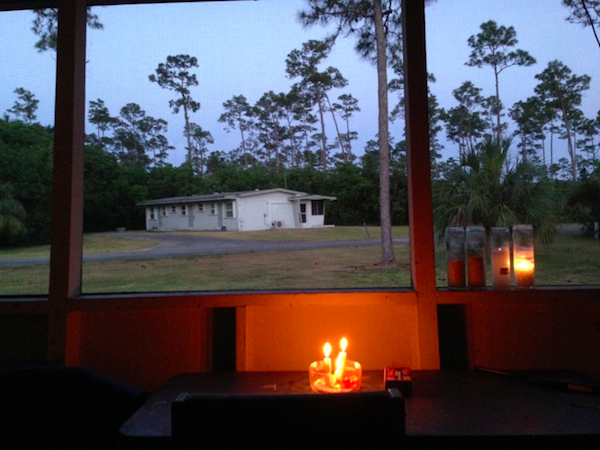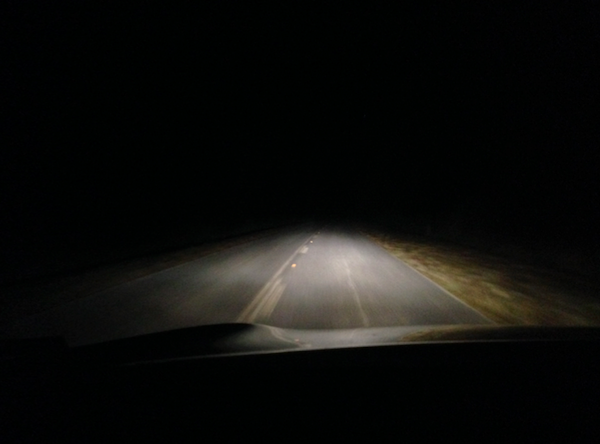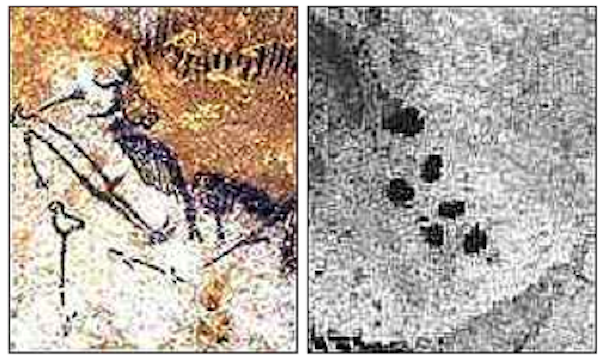
AIRIE Fellow: May 2014 update
By Elite Kedan, AIRIE Fellow First night. Bringing in the Sabbath. And the Spirits Week 1 (Setting Up) The first couple of days in my ‘Mission ‘66’ cabin, (aka Basecamp, the Field Office, the Outpost, or HQ), include cleaning, mopping, re-arranging furniture, de-cluttering and general home- improvement. I have some utility paper in my car and I use it to line surfaces, and create a certain uniformity and order, within reason. I adjust illumination levels and locations, to the extent possible. Part of this is no doubt the architect in me, requiring a certain degree of control and arrangement to feel comfortable. But I’m also trying to create clear containers of space, blank canvases of time, so that I might be able to let go of control, so that creativity has more space here. After a few days, I have a proper information and coffee station in the Field Office. I have an outdoor dining situation consisting of a small folding table and metal/vinyl chair which I move to the west side of the house for breakfast, and then to the east side of the house for dinner. I brought a sheet from an old Felix Gonzalez Torres stack, that I ‘ve always wondered whether to frame or not. Here, it works beautifully as a tablecloth. The 8’ x 30’ concrete trailer pad is my yoga and meditation studio. So far the bugs are okay. The long string of picnic tables in the screened maintenance ‘chickee’ porch have effectively become my studio for research and sketching. And then there are the long afternoon hikes, walking meditations I take daily in my ‘backyard.’ My temporary home here has extended to include the entire park. Or you could say that the Park has become my temporary house, my town, even though most of it remains unknown to me.

Week 1 (Darkness) First night here there was a local power outage after dark. The lights flickered then went out while I was brushing my teeth in the shower. I’d barely arrived and couldn’t remember where things were. I didn’t have a plan for anything, so I got into my car and drove around to assess the situation. Reflexively, I looked into my rear view mirror, and each time I’d be staring into solid black. I did this repeatedly, because apparently it didn’t register the previous time. Or maybe I was secretly thrilled to be inside the kind of dark that you don’t get in the city.

Week 1 (Night Sky) I raise my arm towards the moon and I measure an arc from the horizon. An hour later I repeat the gesture and the arc has dropped, giving me the direction of the moon’s path relative to mine. I notice it’s setting in the west. I find the Big Dipper, and using my hand I follow the line from the tip of its cup to find Polaris, the north star. The sky is so dark here in the ENP (Everglades National Park), and the stars so legible. It was a pleasant shock to discover this night sky, and following it is something I’ve tried to keep as an ongoing practice during my residency. There’s something restorative about using my body as an instrument to read the sky and to ground myself and my location. I never do this in my daily routine, though I incessantly refer to the gps on my phone to navigate, explore and comprehend. Skip Snow says we’ve replaced looking to the stars with looking to our artificial constellation of 24 gps satellites. But what are we losing in the absence of that kind of embodied knowledge and celestial connection? I’ve read that cognitive map-making and long-term memory reside in the limbic, emotional part of the brain, which are key to navigation. Cave paintings from at least 15,000BC depict star maps and an early connection to the sky for understanding time, scale, distance; as well as for purposes of fortune-telling and spiritual connection. Who’s more primitive if we can’t read the world without our screens? Meantime, I use my phone to search astronomical websites, I download a star gazing app and find the planet Mars, and then Scorpio – alternating between the augmented reality and sound effects on my screen, then pulling away and looking up at the sky. And there’s a telescope at Basecamp. On a clear night you can see the craters on the moon. Week 1 (The Intersection at @ 192nd Ave and SW 376th St on 9336)
[clockwise from NE corner]
Active agricultural fields. State prison. Agricultural workers’ housing community. Small house with a gate with a big tent and a trailer that only opens up on weekends to become a restaurant and/or banquet hall.
Recent Content
-
Artsarticle ·
-
Artsarticle ·
-
Artsarticle ·
